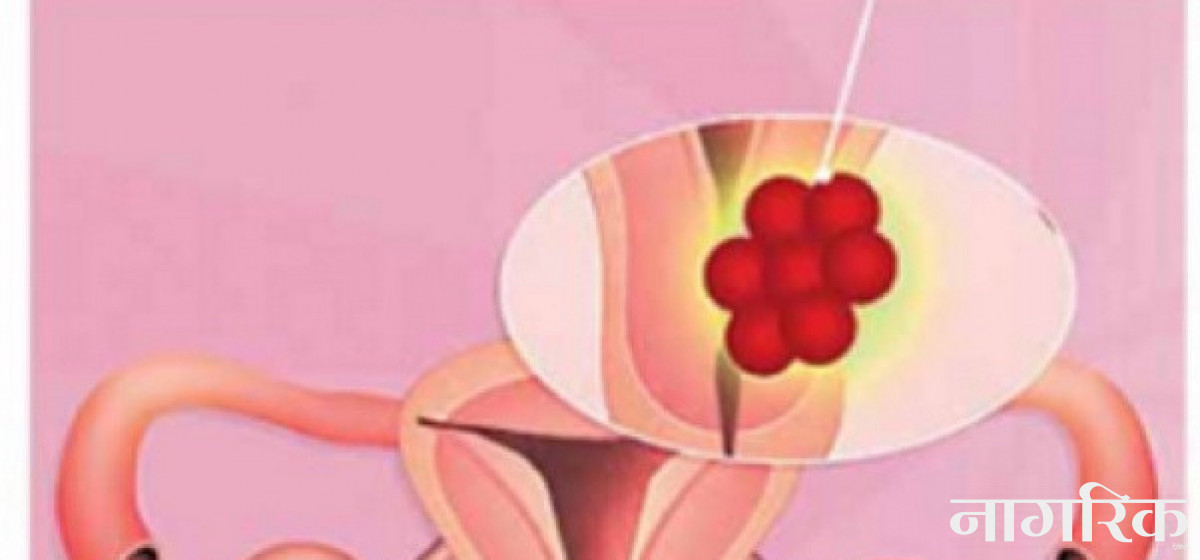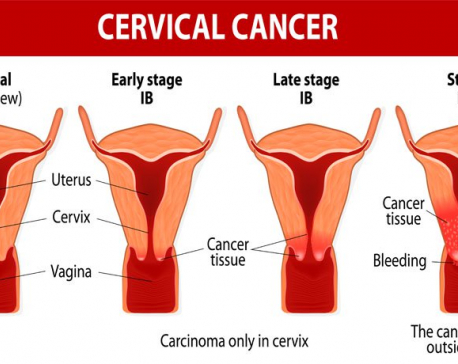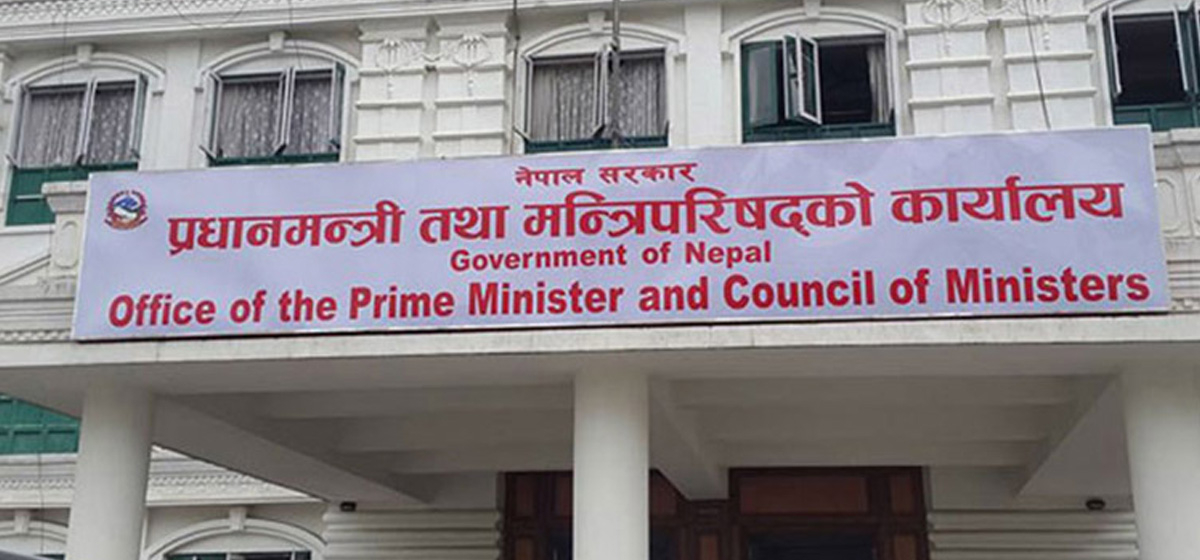
OR
HPV DNA testing proven effective in cervical cancer prevention
Published On: January 1, 2024 09:03 PM NPT By: Pabitra Sunar

KATHMANDU, Jan 1: Cervical cancer claims the lives of many women prematurely, but a simple test can be a lifesaver—the HPV DNA test. This test detects the presence of the Human Papillomavirus (HPV), which is the cause behind cervical cancer.
Doctors say that if the Human Papillomavirus (HPV) is detected by this method, timely treatment and prevention measures can be undertaken before cancer develops. According to Gynea Oncologist Sarita Ghimire, this test can be done every five years for women aged 30 and above.
If cancer-causing HPV is found in the test, the doctor can use the Visual Inspection with Acetic Acid (VIA) test (a method of looking at the cells of the virus by putting acid) to see how much HPV has affected the cells in the body.
Cells affected by the virus later become cancerous. This cell is destroyed by the doctor through the 'thermocoagulation' treatment method. There is no risk of cervical cancer after the virus-infected cells are destroyed.
In Nepal, this test was introduced with the introduction of the vaccine against HPV and is now available in both government and private health institutions. Government hospitals charge Rs 2,000 for this test, while private hospitals charge up to Rs 5,000.
The VIA test is not available in local health institutions. According to the doctor, the impact of HPV varies among individuals, with those having a robust immune system experiencing a slower impact. Cervical cancer typically develops 15 to 20 years after the virus enters the body. While 80% of people naturally clear the virus, the remaining 20% may develop cervical cancer.
Generally, cervical cancer can develop only 15 to 20 years after the virus enters the body. Even if this virus enters the body, the virus in 80 percent of women will excrete out naturally from the body. Only the remaining 20 percent may develop cervical cancer. Ghimire says that there is a common misconception in Nepal that the uterus should be removed as soon as the virus is detected.
Even with the removal of the uterus, the risk of vaginal cancer persists if the virus is present in the stitched area.
The VIA and HPV tests, if conducted, can detect and treat the cancer risk in a timely manner, reducing the need for uterus removal. "There is confusion among both health workers and the public that removing the uterus is the solution, this is not the solution," said Dr Ghimire.
According to statistics, cervical cancer ranks as the leading cancer in women in Nepal. Cervical cancer is diagnosed in 15 women out of 100,000 every year in Nepal. According to Kabita Aryal, Chief of the Family Planning and Reproductive Health Section of the Family Welfare Division, a large number of cervical cancers are diagnosed every year in the target group.
To curb cervical cancer, VIA and HPV testing services have been initiated in some districts at the local level. Additionally, the Family Planning and Reproductive Health Section has introduced cervical cancer vaccinations from this year.
You May Like This

Swayambhunath Temple lighted up in teal color to raise awareness about cervical cancer
KATHMANDU, Nov 18: Nepal Fertility Care Center (NFCC), an NGO working for reproductive health for over three decades in Nepal,... Read More...

Eliminating cervical cancer
Comprehensive screening, vaccination and treatment, including of pre-cancerous lesions, is crucial for eliminating cervical cancer ... Read More...

Cervical cancer common among rural women in Sindhupalchok
CHAUTARA, Oct 30: A noteworthy number of women from rural areas in Sindhupalchok are found suffering from various sorts of... Read More...




Just In
- Ilam by-election update: UML candidate Suhang maintains lead
- Korean embassy and NTB commemorate 50th anniversary of Korea-Nepal Diplomatic Relations
- SC administration files contempt of court case against SidhaKura
- Second day of Nepal Investment Summit to feature diverse discussions
- Ilam-2 by-election: UML’s Nembang leads by 4,523 votes
- UML’s Bhandari secures victory in Bajhang-1 by-election
- CIB probe into fake DL distribution case: PMO pressures public prosecutor to free arrested govt employees
- Police report one death in Bhojpur jeep accident













Leave A Comment